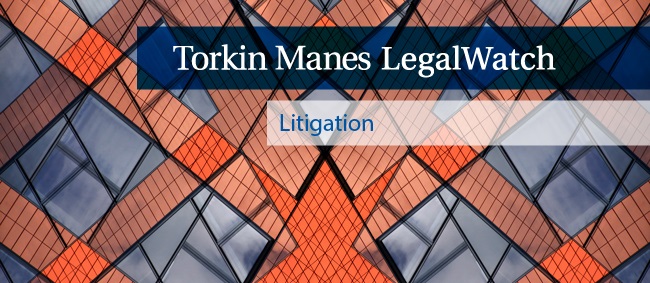
Is there a “Plausible Inference of Liability”? If so, you Should Start Your Lawsuit Now
Overview
In most provinces across Canada, a party has two years to start a civil action. This two-year limitation period is triggered the moment the plaintiff has discovered its claim. Considerable judicial ink has been spilled on the issue of when that two years begins.
A recent decision of the Supreme Court of Canada, Grant Thornton LLP v. New Brunswick, 2021 SCC 31 (“GT”), addresses the required degree of knowledge a plaintiff must possess before the limitations clock starts ticking.
The Court establishes that a claim is discovered when the plaintiff has actual or constructive knowledge of the material facts “upon which a plausible inference of liability on the defendant’s part can be drawn”.
When the Clock Starts to Run in Negligence
GT involved an action by the Province of New Brunswick (the “Province”) in negligence against the defendant auditors for a report the auditors prepared and on which New Brunswick relied when it agreed to guarantee a $50million loan for a company called Atcon.
The defendant’s report of Atcon’s financial status was prepared in May 2009. In that report, the defendant confirmed that it had reviewed Atcon’s financial statements in accordance with Generally Accepted Auditing Standards.
The report satisfied the Province and it guaranteed Atcon’s loan on June 30, 2009.
In March 2010, the bank called on the Province to pay out the loan guarantee after it applied for a receivership order following Atcon’s continued financial difficulties. The Province paid the loan, following which it retained another accounting and auditing firm (the “Second Auditor”) to review Atcon’s financial position in June 2010.
The Second Auditor produced a draft report on February 4, 2011 (the “Draft Report”) and a finalized report on November 30, 2012. The final report was identical to the Draft Report, with a few grammatical errors amended.
In the Draft Report, the Second Auditor stated that Atcon’s financial statements had not, in fact, been prepared in conformity with General Accounting Principles.
As a result of the Draft Report, the Province advised of a formal complaint against the defendant to the Institute of Chartered Accountants in December 2012. On June 23, 2014, a year and a half later, the Province started its action in negligence.
The defendant brought a motion to have the Province’s action dismissed as statute-barred for having been commenced outside the two-year limitation period under New Brunwick’s Limitation of Actions Act, S.N.B. 2009, c.L-8.5 (the “Act”).
The motion judge held that the action was statute-barred. The Province knew or ought to have known that it had prima facie grounds to infer that it had a potential claim against the defendant more than two years before the action was started. The Court of Appeal reversed. It rejected the “prima facie” grounds test of the motion judge.
On appeal to the Supreme Court of Canada, the Court, in a unanimous decision, reversed the Court of Appeal’s decision and held that the action was statute-barred. The Court of Appeal had imposed too high a standard for the discoverability of the claim.
A claim is discovered when the plaintiff has actual or constructive knowledge of the material facts upon which a plausible inference of liability on the defendant’s part can be drawn. This means the plaintiff does not need knowledge of all the constituent elements of a claim to discover it.
In this case, the Court held that the Province discovered its claim on February 4, 2011, being the date of the Draft Report. By this point, it knew or ought to have known that the loss was caused in whole or in part by conduct which the defendant had been retained to detect. The action was started more than two-years after this date, on June 23, 2014, and was therefore statute-barred.
How a Plaintiff Discovers Their Claim
Section 5(2) of the New Brunswick Act consists of three parts and states that a claim is discovered as follows:
5(2) A claim is discovered on the day on which the claimant first knew or ought reasonably to have known
- That the injury, loss or damage had occurred,
- That the injury, loss or damage was caused by or contributed to by an act or omission, and
- That the act or omission was that of the defendant.
In this way, the Act largely mirrors many limitations Acts in Canada – the key difference being that certain statutes, like Ontario’s Limitations Act, 2002, S.O. 2002, c.24, Sched B., includes a “fourth” discoverability prong in which the plaintiff has not discovered the claim until it knows “a proceeding would be an appropriate means to seek to remedy it”.
According to the Court in GT, this list in section 5(2) of the Act is “cumulative, not disjunctive”. Knowledge of a loss, without more, is insufficient to trigger the limitation period.
The Court held that the New Brunswick Act, like similar limitations provisions found in Ontario, Saskatchewan and Alberta, codifies the common law rule of “discoverability” of a claim. Under the common law rule, the two-year limitation period is triggered when the plaintiff discovered or ought to have discovered through reasonable diligence the material facts on which the claim is based.
The Court then analyzed the degree of knowledge necessary to trigger the limitations clock as follows:
- The Test for Discoverability
The Court in GT rejected the Court of Appeal’s assertion that the discoverability of an action requires “knowledge of every constituent element of the cause of action being pled”.
Rather, the Court established the following test:
…a claim is discovered when a plaintiff has knowledge, actual or constructive, of the material facts upon which a plausible inference of liability on the defendant’s part can be drawn.
To determine whether a “plausible inference of liability” can be drawn, the Court considers the plaintiff’s knowledge of the material facts giving rise to an inference that the defendant is liable. According to the Court, a plausible inference “is one which gives rise to a ‘permissible fact inference’ ”.
Moreover, the Court noted that a “plausible inference of liability” means that the degree of knowledge needed is more than only suspicion or speculation on the part of the plaintiff.
However, in no way does this standard rise to the level of requiring a “certainty of the [defendant’s] liability”. A plaintiff does not need to know the exact degree or type of harm it has suffered or the precise cause of its injury for the limitations clock to begin.
For an action in negligence, this means that the plaintiff does not need knowledge that the defendant owed it a duty or care or that the defendant breached the standard of care. This is because knowledge that the defendant breached the standard of care, for example, is usually only available after the plaintiff started its claim.
- The Evidence Required to Assess Discoverability
Both direct and circumstantial evidence can be used to analyze the plaintiff’s degree of knowledge. Constructive knowledge is proven with evidence showing that the plaintiff ought to have discovered the material facts by exercising “reasonable diligence”.
Striking a Balance for Discoverability
GT represents a delicate balance between setting the discoverability standard so high as to allow a plaintiff to delay in the face of a possible action and setting it so low as to require the plaintiff to start an action without sufficient information about the defendant’s liability.
In the language of legal abstractions, the “plausible inference of liability” standard tries to strike a balance between these two standards.
Ultimately, however, the key message of GT is that discoverability is a fact-driven exercise.
The varying decisions of the motion judge, the Court of Appeal and the Supreme Court of Canada in GT show that the question of when a plaintiff discovers its claim very much depends on context and opinion.

